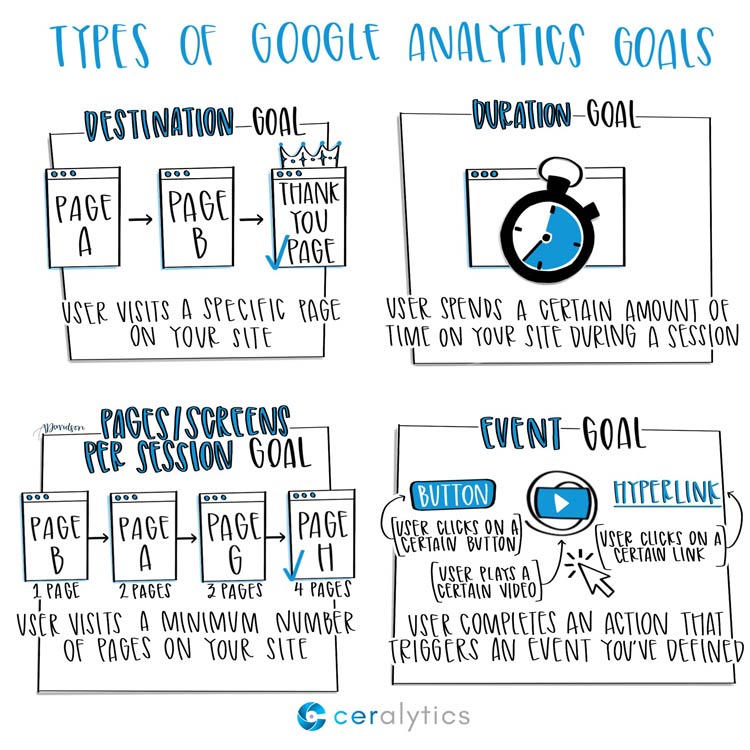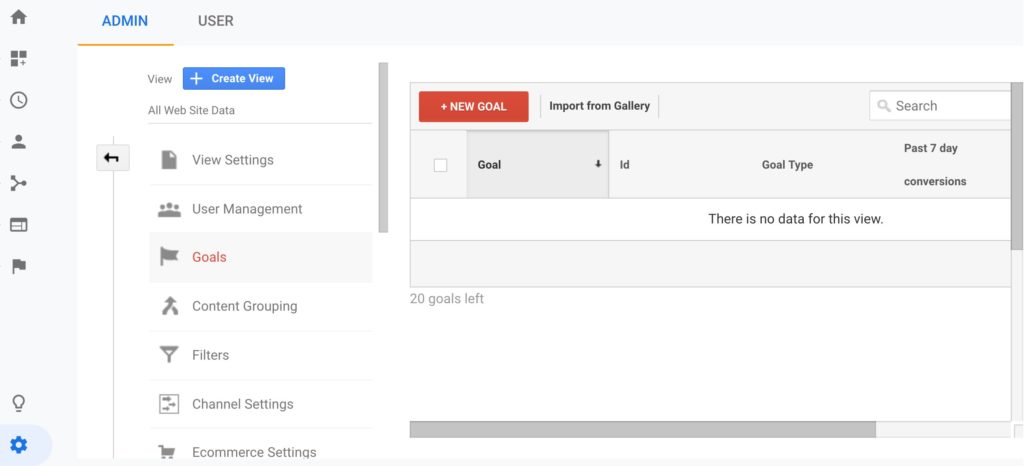Recognizing What Data Is Google Analytics Goals Unable to Track
Recognizing What Data Is Google Analytics Goals Unable to Track
Blog Article
Discover the Limitations of Google Analytics Goals: Unveiling the Information Kind That Remain Untrackable
As services increasingly count on data-driven decision-making, comprehending the restrictions of tools like Google Analytics ends up being critical. While Google Analytics Goals offer useful understandings right into customer interactions, there exist information types that elude monitoring, posturing difficulties to a thorough understanding of user habits.
Incomplete User Trip Tracking
Insufficient individual trip tracking within Google Analytics can impede the capacity to accurately examine customer behavior. When the user journey is not fully tracked, there are gaps in the data that avoid a comprehensive understanding of just how customers interact with an internet site. This absence of insight can cause missed out on opportunities for optimization and renovations to the customer experience.
One usual issue with incomplete customer trip monitoring is the lack of ability to see the complete path that individuals take in the past completing a goal or leaving the site. Without this info, it is challenging to determine where customers may be encountering barriers or friction factors that stop them from converting. In addition, insufficient tracking can cover the impact of specific advertising and marketing initiatives or web site adjustments on individual behavior.
To resolve this constraint, it is crucial to establish up appropriate tracking mechanisms within Google Analytics to record the entire individual journey. This might include establishing event monitoring, goal funnels, or utilizing tools like Google Tag Manager to make sure that no important interactions go unrecorded. By getting a comprehensive view of the customer journey, website proprietors can make more informed choices to enhance customer interaction and drive conversions.
Acknowledgment Difficulties
Navigating via acknowledgment challenges in Google Analytics needs a complete understanding of just how various touchpoints contribute to the general conversion procedure. Acknowledgment obstacles occur from the complexity of contemporary client trips, where customers communicate with several networks before converting.
One common acknowledgment obstacle is the problem in connecting conversions to the correct resource, specifically in instances where individuals communicate with multiple networks prior to transforming. In addition, cross-device tracking positions an additional attribution difficulty, as users frequently change in between gadgets during their trip, making it challenging to track their interactions perfectly.
Offline Conversions
Given the obstacles related to attributing conversions precisely in online networks, the dimension of offline conversions presents a considerable opportunity for online marketers seeking a much more comprehensive understanding of their customers' trip. Offline conversions describe actions that clients take in the physical globe, such as making purchases in brick-and-mortar stores or over the phone, attending occasions, or engaging with published products - what data is google analytics goals unable to track. These conversions are important for services that run both online and offline, as they provide important understandings into the efficiency of marketing projects throughout numerous touchpoints
Tracking offline conversions typically postured a significant difficulty for marketers, as it was challenging to attach these activities back to specific online communications properly. With innovations in innovation, such as the combination of CRM systems, special identifiers, and promo code codes, companies can now connect the space between online and offline information to this post gain a more holistic view of client habits. By successfully determining offline conversions, online marketers can optimize their methods, allot sources extra successfully, and eventually enhance the overall consumer experience.
Cross-Device Tracking
Cross-device monitoring plays a critical function in understanding the interconnected nature of customers' electronic communications throughout several gadgets. In today's omnichannel globe, where individuals effortlessly change in between mobile phones, desktops, and tablet computers, tracking their habits throughout these gadgets is essential for marketing experts to obtain a comprehensive sight of their client trip.

Moreover, privacy worries and laws such as GDPR and CCPA have further complex cross-device tracking. With customers requiring even more control over their information and boosted constraints on monitoring technologies, online marketers must find innovative and privacy-compliant methods to connect individual communications throughout devices.
Dynamic Material Interaction
Recognizing user involvement with dynamic content is pivotal in enhancing electronic advertising and marketing approaches for enhanced target market communication. Dynamic material describes web site elements that change based upon individual habits, preferences, or other aspects, providing a tailored experience. Nonetheless, tracking user communications with dynamic material positions challenges for typical analytics devices like Google Analytics.
While Google Analytics can track standard communications like clicks and page sights, it may have a hard time to catch even more nuanced interactions within vibrant web content. what data is google analytics goals unable to track. Metrics such as time invested in anchor specific vibrant aspects, hover activities, or interactions within pop-ups are often not conveniently quantifiable using typical tracking approaches. This restriction prevents marketers' ability to fully comprehend how individuals are involving with dynamic web content and customize their techniques accordingly

Verdict
In conclusion, Google Analytics goals have restrictions in tracking insufficient user journeys, attributing conversions properly, catching offline conversions, tracking cross-device interactions, and determining vibrant material involvement. These constraints highlight the significance of checking out additional monitoring techniques and tools to get a more extensive understanding of individual actions and conversions past what Google Analytics can supply.
While Google Analytics Goals deal beneficial understandings right into user communications, there exist data types that elude monitoring, presenting obstacles to a thorough understanding of user habits.Insufficient customer trip tracking within Google Analytics can hinder the ability to accurately assess customer actions. When the individual trip is not totally tracked, there are voids in the information that protect against Learn More a thorough understanding of just how individuals connect with a website.One usual problem with incomplete individual trip monitoring is the failure to see the full course that users take before finishing a goal or leaving the site. By gaining a thorough sight of the customer trip, site proprietors can make more enlightened decisions to improve individual engagement and drive conversions.
Report this page